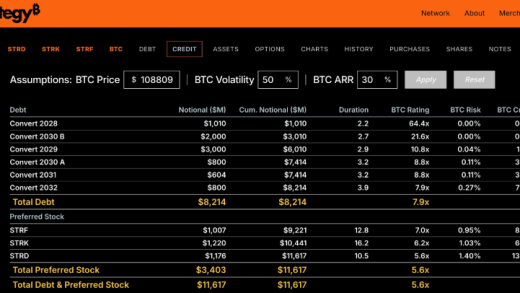I. Industry Risk Analysis
(1) Policy Risk
Entrepreneurs need to be vigilant about the periodic policy risks in the gold recycling industry. Currently, the supervision of precious metal trading is in an intensified stage, and policy – making may tend to be stricter (such as strengthening the review of environmental protection qualifications and the real – name registration system for anti – money laundering). There are uncertainties in the implementation level, such as surprise inspections and retroactive penalties. During the policy adjustment window period, there is a risk of changes in tax rules (such as tighter supervision of special VAT invoices), and local regulations are prone to sudden changes due to geopolitical or financial security pressures. If the policy enters the end – cycle, the franchise qualifications may be re – approved, and historical compliance defects of existing enterprises may lead to the revocation of their business licenses. Cross – regional operators also face the problem of a sharp increase in compliance costs due to differences in regulatory standards across regions.
(2) Economic Risk
From the perspective of economic cycle fluctuations, the gold recycling service industry currently faces two major risks. Firstly, during the stagflation stage of the economy, the sharp fluctuations in the gold price lead to a significant short – term shrinkage in the value of inventory. If the price window period cannot be accurately grasped, it is easy to cause a cash – flow break. Secondly, during the economic recovery period, consumers tend to hold gold rather than sell it, which directly impacts the recycling business volume. Coupled with the rigid increase in labor costs with inflation, enterprises will be caught in the double squeeze of “low turnover and high costs”, which is particularly fatal for start – up enterprises that rely on stable traffic.
(3) Social Risk
From the perspective of inter – generational consumption theory, the core contradiction of the gold recycling service lies in the inter – generational misalignment of value perception. Driven by the traditional concept of “storing gold for risk – avoidance”, the middle – aged and elderly groups have limited short – term recycling needs but a large long – term stock. While the young group is more accepting of immediate cash – out, they lack trust in the service transparency and the recycling pricing mechanism, resulting in a contradiction between high – value assets and low – trust delivery. Entrepreneurs face double risks. They need to take into account the differences in inter – generational interaction habits in the service model (the gap between offline gold inspection scenarios and online valuation algorithms), and also deal with the risk of “profiteering harvesting” stigmatization in inter – generational communication. A pricing deviation for a single – generation customer group may trigger a trust collapse across all age groups.
(4) Legal Risk
The gold recycling service industry faces multiple legal risks. In terms of compliance, failing to strictly implement the customer identity identification and transaction record preservation systems required by the “Regulations on the Administration of Renewable Resources Recycling” and the “Anti – Money Laundering Law” may be regarded as assisting money – laundering. In the tax aspect, if the recycling vouchers are not issued in a standardized manner and the purchase – sale price difference of precious metals is not accurately accounted for, it is easy to arouse suspicion of false invoicing or tax evasion. In the environmental protection field, violating the “Measures for the Administration of Permits for the Operation of Hazardous Wastes” and improper handling of gold products with chemical coatings will result in administrative penalties. If the business source is not strictly controlled, it may violate the crime of concealing and disguising criminal proceeds in the “Criminal Law”. Insufficient pricing transparency or disputes over fineness appraisal may lead to consumer disputes. Violating the “Consumer Rights and Interests Protection Law” will face the risk of triple compensation.
II. Entrepreneurship Guide
(1) Suggestions on Entrepreneurial Opportunities
Entrepreneurial opportunities in the gold recycling industry are concentrated in the construction of community – based service networks and the optimization of digital processes. Taking advantage of the increasing demand for cash – out among residents during the gold price fluctuation period, the “online valuation + offline outlets” model can be used to improve service response efficiency. Entrepreneurs can cooperate with community supermarkets and bank outlets to establish offline gold detection and recycling stations to reduce customer trust costs. They can develop mini – programs to synchronize international gold prices and depreciation algorithms in real – time, achieving transparent quotations and remote pre – approval. They should focus on the idle wedding gold jewelry market and cooperate with jewelry brands for trade – in activities, integrating jewelry repair and customization services to form a secondary consumption closed – loop. For the enterprise – end recycling scenario, precious metal industrial waste purification technology can be developed to connect with the waste metal resources of electronic manufacturing and medical institutions, constructing a B – end raw material supply chain.
(2) Suggestions on Entrepreneurial Resources
Entrepreneurs in the gold recycling industry need to focus on integrating precious metal supply chains, customer resources, and compliance qualifications. They should give priority to connecting with jewelers, pawnshops, and electronic waste suppliers to establish stable raw material channels. They can use community cooperation outlets and online second – hand trading platforms (such as Xianyu and Douyin’s local life) to develop C – end customers. Obtain compliance recycling qualification certifications and environmental protection permits through industry associations. Integrate third – party testing institutions (such as spectrometer service providers) to provide professional appraisal endorsements. Cooperate with banks to develop short – term financing products for precious metal mortgages to solve the problem of working capital. Introduce logistics insurance services to reduce transportation risks. At the same time, pay attention to local industrial policies (such as renewable resource subsidies) to reduce operating costs. Build an ERP system to achieve real – time pricing of precious metals and dynamic inventory management, forming a closed – loop chain of “detection – recycling – refining – sales” through resource combination.
(3) Suggestions on Entrepreneurial Teams
The entrepreneurial team in the gold recycling service industry should give priority to recruiting members with the abilities of precious metal appraisal, compliance operation, and customer resource development. The founder should ensure that team members hold legal qualification certifications (such as precious metal appraiser certificates) and establish a standardized recycling process training system. A remote appraisal technical support position should be configured to reduce the risk of physical misjudgment. At the same time, a customer manager should be set up to maintain relationships with B – end channels such as banks and jewelry stores. The finance position must be staffed with professionals familiar with the “Regulations on the Administration of Gold and Silver”. The team’s salary is recommended to adopt the “basic salary + recycling gross profit sharing” model to strengthen risk – control awareness. Core members should sign non – compete agreements to prevent the loss of customer resources. Weekly industry policy and gold price fluctuation analysis meetings should be held to improve the team’s market sensitivity.
(4) Suggestions on Entrepreneurial Risks
Entrepreneurs in the gold recycling industry need to focus on controlling appraisal risks. They should be equipped with professional detection equipment such as spectrometers and cooperate with regular testing institutions, and establish a double – person review mechanism. Monitor international gold price fluctuations in real – time, lock in prices through the bank’s instant quotation system, and adopt the “recycle on the same day and transfer the order on the same day” model to reduce the risk of inventory backlog. Strictly standardize the processes of identity registration, contract signing, and invoice issuance. Use the public security network – connected system to verify customer identity information and retain transaction videos for at least 180 days. Use a combination of safes, monitoring, and electronic payments to ensure capital security, and control the daily recycling volume within 50% of the working capital. To address the trust pain points of C – end customers, transparent services such as “melting the gold first and then weighing” and “third – party re – inspection” can be provided, and a 7 – day price repurchase guarantee mechanism can be provided.





